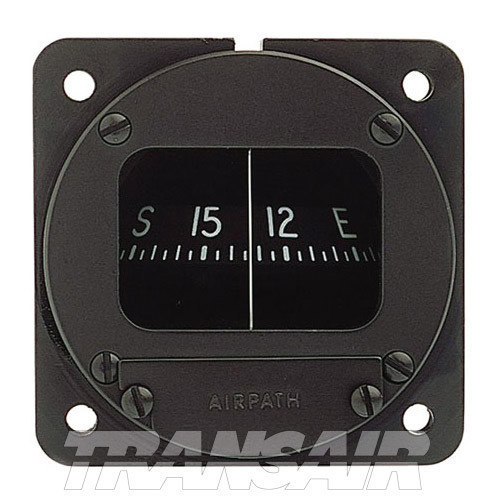Winter Compass Airpath C 2300 Type 1
Winter Compass Airpath C 2300 Type 1
The Airpath C 2300 can be panel or coaming mounted and requires a 57 mm cut-out. Non magnetic mounting nuts and bolts included.Compass Technical Note:
For cockpit installation or alternative on top of the instrument panel. The compensation is by means of magnets permanently installed in the compass, with adjustment effected from outside by means of 2 set screws. The graduation on the dial is 5°.
When compasses are installed on any instrument panel, care should be taken to see that are as far as possible from radios, electric motors (such as the panel vibrator, or wires carrying heavy current. Normally in any installation there will be errors caused by residual magnetism in nearby components of the aircraft. These errors, called deviation errors, can be minimized by small compensating magnets built in the compass. The magnets are usually adjusted by means of a screw driver, preferably or brass or fibre. The process of making this adjustment is called "swinging the compass" and it is done by setting up the aircraft in a position of the ground where directions are accurately known. The aircraft is then pointed to north with all electrical equipment turned in and operating, an the fuselage placed in flying attitude. The north-south compensating screw is then turned until the compass ready exactly north. The aircraft is then rotated 180°. Let us assume that it shows 10° off south; the north-south compensation is then adjusted to reduce this error to one half its, or 5°. The aircraft is then rotated to north again and the residual observed error reduced by half. The same procedure is then repeated on the east-west headings. Sometimes 2 or 3 cycles of adjustment in each direction, with the error halved each time, will further improve the compensation.
If the compass has more than 5° error in any direction it might be wise to try moving the instrument to a different location on the instrument panel. Two common sources of random errors in aircraft compasses are portable radios, which have very strong permanent - magnetic loud speakers, and photographic exposure meters, which have strong magnets to operate the meter movements. If either of these is placed near a compass its readings will become completely unreliable.

